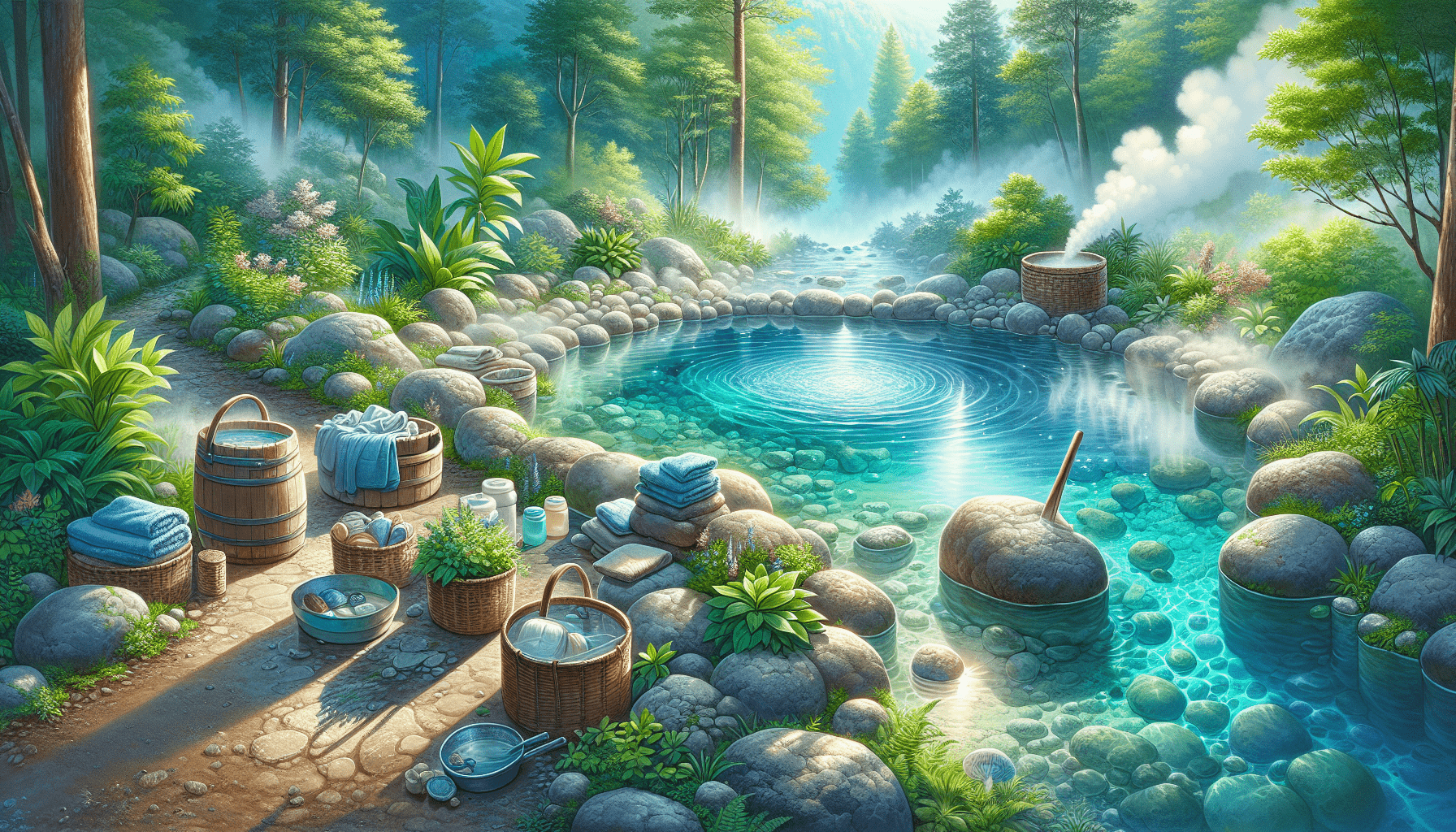Have you ever wondered if hot springs pools are actually clean? Well, this article addresses this common concern and sets out to shed some light on the matter. While hot springs are known for their relaxing and therapeutic qualities, some may be hesitant to take a dip due to potential hygiene issues. However, fear not! By exploring the factors that contribute to the cleanliness of hot springs pools, we aim to provide reassurance and help you fully enjoy this rejuvenating experience.
024x585.png" title="Are Hot Springs Pools Clean?" alt="Are Hot Springs Pools Clean?" style="max-height: 500px; max-width: 100%;" />
What are hot springs?
Definition
Hot springs are natural bodies of water that are heated geothermally, meaning they are warmed by the Earth’s internal heat. These enchanting geological features can be found all over the world, and they have been cherished by various cultures throughout history. Hot springs are known for their warm temperatures, which are often higher than the average human body temperature, and their unique mineral content.
Formation of hot springs
Hot springs are formed when water from rainfall or snowmelt seeps into the ground, permeating deep into the Earth’s crust. As the water descends, it comes into contact with heated rocks and magma chambers, where it begins to absorb the Earth’s natural heat. This heated water then rises to the surface, creating hot springs. The temperature of a hot spring is dependent on the depth it travels before resurfacing, the geological activity in the area, and the specific mineral composition present in the water.
Types of hot springs
Geothermal hot springs
Geothermal hot springs are the most common type of hot springs and are formed due to the Earth’s natural geothermal energy. These hot springs can be found in regions with active geothermal activity, such as volcanic areas or areas with tectonic plate boundaries. Geothermal hot springs often have a high mineral content, which can vary depending on the geological composition of the region.
Volcanic hot springs
Volcanic hot springs are closely related to geothermal hot springs but are primarily formed due to volcanic activity. These hot springs are found near active or dormant volcanoes, where magma heats the surrounding groundwater. Volcanic hot springs often contain a higher concentration of minerals, such as sulfur, due to the volcanic activity in the area. The vibrant colors and unique mineral patterns found in volcanic hot springs make them a visually stunning and popular attraction for visitors.
Artesian hot springs
Artesian hot springs are slightly different from geothermal and volcanic hot springs. They are formed when water is confined in a pressurized aquifer, typically deep within the ground. When a natural opening, such as a fault line or fissure, occurs in the Earth’s surface, the pressurized water is forced upward, creating an artesian hot spring. The water in artesian hot springs tends to be clean and free of minerals, providing a refreshing and rejuvenating experience for visitors.
Sanitization methods
Chemical treatments
One common method for maintaining cleanliness in hot springs pools is through chemical treatments. These treatments involve the addition of sanitizing agents, such as chlorine or bromine, to the water. These chemicals help kill and prevent the growth of harmful bacteria and other microorganisms in the hot springs. Regular testing of the water is essential to ensure that the chemical levels are properly balanced to provide a safe and hygienic environment for visitors.
Filtration systems
In addition to chemical treatments, hot springs often employ filtration systems to remove debris, dirt, and other impurities from the water. Filtration systems can consist of various components such as sand filters, cartridge filters, or UV filters. These systems help to maintain water clarity and remove any particles that may contribute to contamination. Regular maintenance and cleaning of these filtration systems are crucial to ensure their efficiency and effectiveness in keeping the hot springs clean.
Benefits of hot springs
Relaxation and stress relief
Hot springs are renowned for their relaxing properties. The warm water, soothing ambience, and natural beauty of hot springs provide a tranquil environment, allowing visitors to unwind and release built-up stress. The experience of soaking in a hot spring can have a calming effect on the mind and body, promoting overall relaxation and well-being.
Improved blood circulation
The warm temperature of hot springs can stimulate blood flow and open up blood vessels, leading to improved circulation throughout the body. This increased circulation allows more oxygen and nutrients to reach the body’s tissues and organs, promoting overall health and vitality. Regular visits to hot springs can help improve cardiovascular health and may even alleviate symptoms of conditions such as arthritis or fibromyalgia.
Pain relief
The combination of heat and minerals found in hot springs can have therapeutic effects on muscle and joint pain. Soaking in hot springs can help alleviate muscle tension, reduce inflammation, and provide relief from conditions such as arthritis or back pain. The buoyancy of the water also helps to reduce pressure on joints, making hot springs a popular destination for individuals seeking natural pain relief.

Potential health risks
Bacterial infections
While hot springs offer numerous benefits, there are also potential health risks associated with soaking in these natural pools. One of the main concerns is the presence of bacteria, such as Legionella or Pseudomonas, which can thrive in warm water environments. These bacteria may cause infections, such as Legionnaires’ disease or hot tub rash, if the water is not properly maintained or treated with appropriate sanitizing agents.
Skin irritations
Hot springs can also cause skin irritations in some individuals. The high mineral content in the water, particularly sulfur, can potentially cause skin dryness, rashes, or irritation. It is important to note that these reactions vary from person to person, and some individuals may be more sensitive to certain minerals. It is advisable to monitor your skin’s reaction and limit exposure if any discomfort or irritation occurs.
Hot springs maintenance
Regular monitoring of water quality
To ensure the safety and cleanliness of hot springs pools, regular monitoring of water quality is critical. This includes testing for pH levels, disinfectant levels, and the presence of any harmful bacteria or microorganisms. This monitoring should be conducted by trained professionals who are knowledgeable about water chemistry and sanitation practices. By closely monitoring water quality, any imbalances or potential hazards can be identified and addressed promptly.
Cleaning and maintenance tasks
Hot springs require regular cleaning and maintenance to remove any debris, algae, or contaminants that can accumulate over time. This includes cleaning the pool surfaces, filtration systems, and any surrounding areas. It is also essential to regularly clean and maintain any equipment, such as pumps or heaters, to ensure their proper functioning. By adhering to a strict cleaning and maintenance schedule, hot springs can maintain their cleanliness and provide a safe and enjoyable experience for visitors.
Regulations and certifications
Role of health departments
Health departments play a crucial role in regulating and ensuring the safety of hot springs pools. They establish guidelines and regulations that hot springs facilities must adhere to in order to operate. These regulations may include requirements for water quality, sanitation practices, and regular inspections. Health departments work closely with hot springs operators to ensure compliance with these regulations and to address any potential health and safety concerns.
Certifications and inspections
Hot springs facilities may also seek certifications from reputable organizations to demonstrate their commitment to maintaining cleanliness and safety standards. These certifications often require facilities to undergo regular inspections and meet specific criteria regarding water quality, sanitation, and maintenance practices. By obtaining these certifications, hot springs facilities can provide reassurance to visitors that they are dedicated to providing a clean and safe environment.
Recommended precautions
Shower before entering the hot springs
To minimize the introduction of contaminants into the hot springs, it is recommended to shower thoroughly before entering the water. This helps remove any sweat, oils, or lotions that could potentially affect the water quality. Showering also helps to acclimate the body to the warm temperature of the hot springs gradually, preventing any discomfort or shock to the system.
Avoid swallowing the water
While hot springs are generally safe for soaking, it is important to avoid swallowing the water. Hot springs can contain varying levels of minerals, bacteria, and other microorganisms that may not be suitable for ingestion. To minimize the risk of any potential health issues, it is advisable to keep your mouth closed and avoid swallowing or ingesting the water while enjoying the hot springs.
Check for potential hazards
Before entering a hot springs pool, it is essential to survey the area for any potential hazards. This includes looking for slippery surfaces, sharp objects, or unstable terrain. Hot springs can be set in natural landscapes, and it is important to exercise caution and be aware of your surroundings to ensure a safe bathing experience.
Visiting popular hot springs destinations
Popular hot springs around the world
Hot springs are a popular tourist attraction in various parts of the world. Some of the most famous hot springs destinations include:
-
Blue Lagoon, Iceland: Known for its mesmerizing blue waters, the Blue Lagoon is a geothermal spa located in Iceland’s volcanic landscape. Visitors can enjoy the mineral-rich waters while surrounded by stunning natural beauty.
-
Pamukkale, Turkey: Pamukkale, meaning “cotton castle” in Turkish, is a UNESCO World Heritage Site renowned for its cascading white terraces of mineral-rich hot springs. The unique travertine formations create a picturesque and surreal experience.
-
Beppu, Japan: Beppu is a city in Japan famous for its numerous hot springs, or “onsen.” Visitors can enjoy bathing in various types of hot springs, each with its own unique characteristics and mineral composition.
-
Chena Hot Springs, Alaska: Located in the beautiful Alaskan wilderness, Chena Hot Springs offers visitors a chance to soak in naturally heated mineral-rich waters while taking in breathtaking views of the surrounding mountains and forests.
Important considerations
When visiting hot springs destinations, it is important to research and understand any specific guidelines or regulations associated with each location. Different hot springs may have their own rules regarding clothing requirements, hours of operation, and age restrictions. Respecting and adhering to these guidelines ensures a harmonious experience for all visitors and helps in maintaining the cleanliness and integrity of the hot springs.
Conclusion
Hot springs pools can offer a rejuvenating and relaxing experience, but it is essential to prioritize cleanliness and safety for an enjoyable visit. By understanding the formation and types of hot springs, as well as the various methods of sanitization, it becomes evident that maintaining the cleanliness of hot springs pools is crucial. While there are potential health risks associated with hot springs, such as bacterial infections or skin irritations, these can be mitigated through regular monitoring, proper maintenance, and adherence to recommended precautions. With the right measures in place, hot springs can provide a sanctuary for relaxation, improved blood circulation, and pain relief, allowing visitors to truly enjoy the wonders of nature’s warm embrace.
